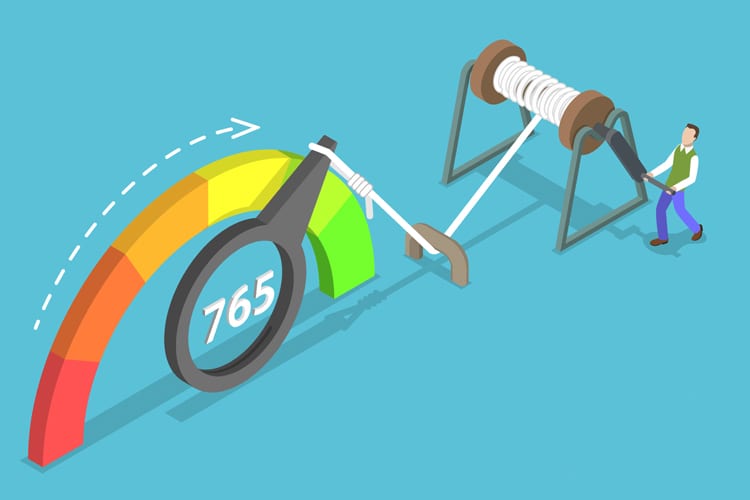The Average Credit Score is at an All-Time High. How?

Despite the financial devastation wreaked by the coronavirus pandemic, the average credit score in America has risen. The average score is now 711, according to FICO, up from 706 in 2019.
Credit score is widely used as a benchmark of financial health for individuals, so on the surface, this seems a bit confusing. Millions of Americans are out of work, struggling with money, and behind on bills and rent. So how could our collective credit scores be rising?
Why Credit Scores Are Going Up
FICO has a few general points explaining why the average credit score is still trending up, despite the circumstances. First off, despite many Americans struggling financially, very few have missed bills. Although government stimulus has been lacking, it seems as if many out of work people are still managing to cover expenses. Only 7.3 percent of people are more than 90 days overdue on a bill, compared to 8.1 percent in January.
In addition, consumers placed in forbearance or deferment because of the pandemic disaster will not see their credit score impacted. Credit agencies have been diligent about keeping pandemic-related struggles from impacting someone’s credit score, as a serious drop could ripple for years.
FICO also pointed out that the average individual debt is dropping.
Notably, the average U.S. credit card debt is down nearly $1,000 since January. This is, of course, related to the pandemic, as people have cut things like travel, gyms, and restaurants largely out of their spending.
While it may seem counterintuitive that credit scores are going up amid a nationwide crisis, many of the factors driving this increase are directly tied to the pandemic. Measures like the student loan freeze (through January 1st), for instance, helped student borrowers get more control over their debt temporarily.
Will This Trend Keep Up?
FICO tracks the average credit score every year, and generally, the number pushes upward each year. This is the 10th consecutive year where credit scores rose, continuing an upward trajectory since the 2007-08 financial crisis. The average is up nearly 25 points since its 15-year low in 2009.
While there is some room for optimism from this data, it should be cautious. FICO warned that credit scores often don’t accurately represent the reality of an ongoing, macroeconomic stressor. Often it can take months or years for the full impact of a financial crisis to be reflected in credit reporting. Even after 2007, the average credit score did not bottom out and bounce back until two years after the initial economic collapse.
Long story short, we don’t know what to expect next. There are plenty of outstanding questions that need answers before anyone can get a firm sense of what the near future looks like. Further government stimulus or extensions of student loan and eviction freezes could help, but it’s unclear if any relief will come. As the economy recovers, we will also have to track what shape it takes to understand what the future holds.
The Bottom Line
Uncertainty is the new way of life since the pandemic began. While the FICO data is an encouraging sign, it doesn’t reflect the full picture. Barring further private and public sector relief measures, we may see this average dip next year, or in 2022.
Regardless of the national average, what really matters is how you and your family are doing. That’s why we’ve compiled tips on how to protect your own credit score during the pandemic.









